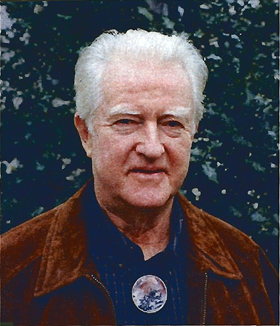Carl Lewis Johannessen
1924 - 2019

Carl Lewis Johannessen (1924–2019), a literal and figurative giant of cultural-plant geography and cultural-diffusionist studies, died at age 95, on 13 November 2019. He was Professor Emeritus and one-time head (1978–1981) of Geography at the University of Oregon, where he had been hired in 1959. Carl was a charter member of the Editorial Board of Pre-Columbiana: A Journal of Long-distance Contacts, which I founded and edit, as well as a contributor and the dedicatee for book 6(2–4). The geographer Daniel W. Gade pointed to his contributions as a cultural diffusionist, in book 3(1–3).
Born in Santa Ana, CA, on 28 July 1924, Carl served with the Navy in the Pacific during World War II. He earned a B.A. in Wildlife Conservation and Management at the University of California, Berkeley (1950), an M.A. there in Zoology (1953)—both under A. Starker Leopold—plus a Ph.D. in Geography (1959) with Carl O. Sauer. Johannessen was one of the last living links to the “Old Man” among products of the “Berkeley School.” Another influence was the Missouri Botanical Garden botanist Edgar Anderson.
Johannessen was an inveterate library and field scholar, though one little concerned with convention. He examined human impacts on wild plants as well as domestication as a process and the histories and geographies of individual domesticates. He initially worked in the Americas and in 1999 received the Conference of Latin Americanist Geographers’ Preston E. James Eminent Latin Americanist Career Award (see C.L.A.G. Yearbook 25). However, from 1985 on, turmoil in Central America led him to concentrate instead on South Asia, where horticultural similarities inspired hypotheses of pre-1492 transoceanic interinfluences. He also worked in China and in Polynesia.
Johannessen followed up on my 1978 observation concerning the depiction of a maize ear in a pre-1492 South Indian sculpture, discovering hundreds more and recognizing images of other American domesticates (confirmed by Shakti M. Gupta in 1996). During the 1980s, his presentations on this generated considerable interest. At a 1988 conference, Carl met the Brigham Young University anthropologist John L. Sorenson, which led to a collaborative encyclopedic collection of data demonstrating the previously unimagined magnitude of the pre-Columbian interhemispheric exchange of organisms. World Trade and Biological Exchanges Before 1492 represents a particular milestone in the study of pre-Columbian human mobility. It was self-published, commercial presses having considered the esoteric content to be unsalable.
In 1973, Carl had encountered the Asian-looking black-boned, black-fleshed chicken (“BBC”), in Guatemala, and he and his hiree May Fogg discovered that Native American (but not Mestizo or Euroamerican) keeping of this strain was widespread, as were associated medicinal usages closely reminiscent of practices in China.
In 2016,Johannessen published a more-popular book on early international biological transfers: Pre-Columbian Sailors Changed World History (like the 2013 volume, reviewed in 2019 by Charles F. Gritzner, in The AAG Review of Books 7). The ever-game 94-year-old Johannessen’s last conference presentation was delivered in Sitka, in 2018.
Carl was also concerned with practical applications concerning cultivated plants and engaged in plant-breeding experiments on his farm.
—
University of California, Davis
333 Court St., NE
Abingdon, VA 24210-2921
scjett@hotmail.com